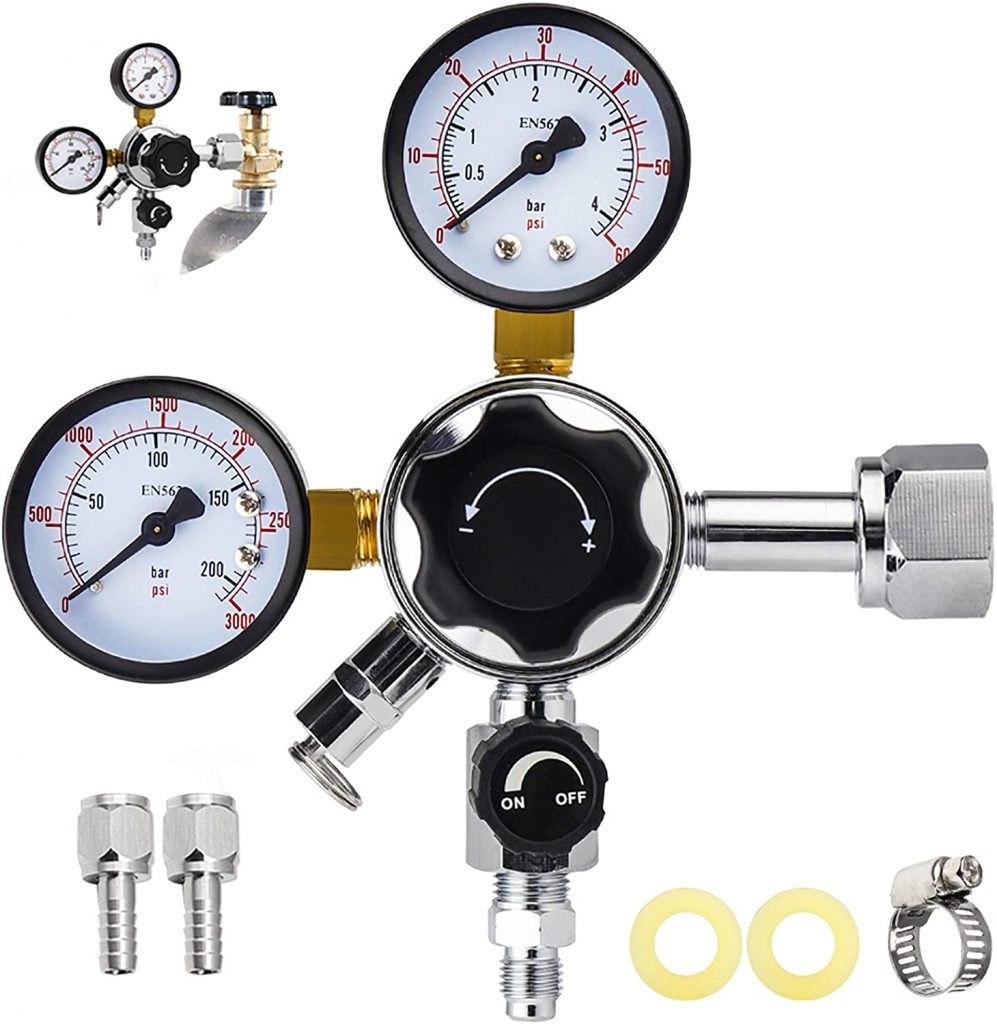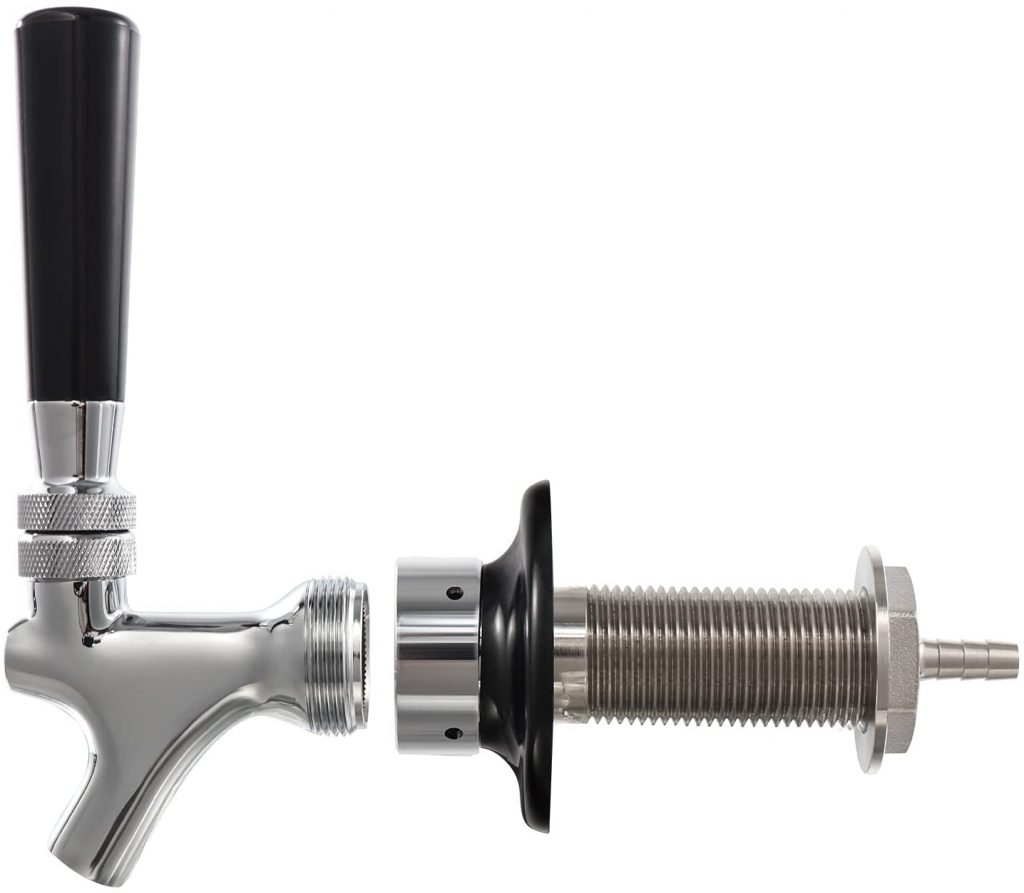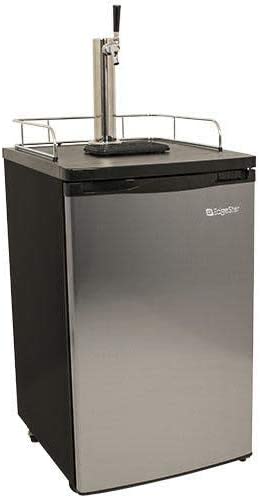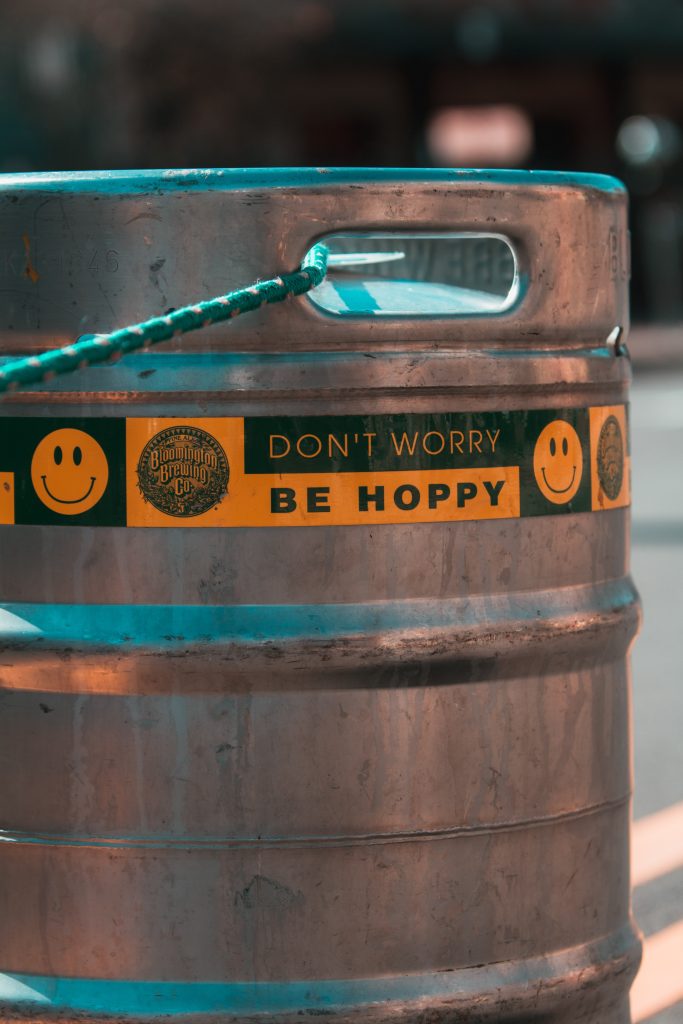This post contains affiliate links which we are compensated for if a purchase is made. Using links costs you nothing and helps to support the ongoing creation of content. Thank you for using them.
How Much Does A Kegging System Cost? If you have been brewing for a while and storing your beer in bottles you may be considering upgrading to kegs. They are faster to fill, there is no bottle washing and sanitizing required and the beer is ready to drink in just a few days. So to set up a basic kegging system what does it cost?
To set up a kegging system at home you can expect it to cost around $750. The major cost associated with the set-up is the kegerator (a fridge that keeps the kegs cold) which represents around 2 thirds of the cost. The cost of this can be reduced significantly if you have an existing second fridge that can hold kegs. Alternatively, if you have an existing chest freezer that can be converted to a kegerator.
Details on all the items you will need along with instructions on how to build a kegerator are provided in the article below.
What Items Do You Need To Purchase?
Kegs
The first and most obvious thing you need is the kegs themselves, you will need at least 2 kegs to start you off. The most common and convenient keg size is 5-gallon kegs because it will fit an entire 5-gallon batch in a single keg. However, there are 3-gallon kegs that are also available if you are making smaller batches or wanting to split fill the beer into bottles. Some brewers find this useful if they are giving their beer as presents or taking homebrew to a party.
A new keg 5-gallon at the time of writing this article cost around $90 to $100USD on Amazon, however refurbished kegs were also available for around $60 to $70USD. Click here to see the latest price on Amazon click on the link for a new keg and a refurbished keg.

Carbon Dioxide Tank
The second key ingredient of your kegging system is the carbon dioxide tank there are many different sizes available however the most common is a 5lb and 10lb tank. A 5 lb tank may be expected to last for 6 or 7 kegs, before needing to be refilled whereas a 10 lb tank will last 10-12 kegs. These numbers can vary based on the level of carbonation and frequency of use.
Generally, I would recommend purchasing a 10lb tank to reduce the frequency of filling as the cost differential between the tanks is only $30 to $40USD, and in the grand scheme of the cost of setting up a system it has little impact. To see the latest price on Amazon for a 5lb tank and a 10lb tank click on the links.
Regulator
In addition to the carbon dioxide tanks, you will need a gas regulator to control the amount of pressure. There are many types of regulators that will do the job however the one we recommend is designed specifically for home brewers and features an isolation switch and release valve for releasing pressure. Click here to see the latest price on Amazon.

Beer Tap
To dispense the beer you will need a tap. There are 2 main types; free-standing and taps that are designed to be mounted. With the mounted varieties, there is a range of different styles that include beer towers that have single or multiple taps.
The lowest cost option is to use free-standing taps which are usually come with 2-3 ft of tubing which allow maximum flexibility when filling however these products do not work all that well with a keezer. To see the latest price on Amazon click here.
However, if you are using a keezer it is far better to use a mounted tap as the quality of the fitting is significantly higher and it generally provides a sturdier way to dispense beer. I generally recommend buying single taps as it is easy to add more taps later. The taps typically cost between $20 and $40USD each though the price can move around a little bit, click here to see the latest price on Amazon.

Mounted taps generally don’t come with tubing and clamps. These are items are relative cheap and will not significantly impact the cost of the overall set-up. 10ft of food-grade tubing and clamps typically cost $10USD or less from Amazon.
Keezer Or A Kegerator
The final piece of the puzzle in creating a keg system is keeping the beer cold in kegs. This part of the system represents the single most expensive part of the set-up because unlike bottles and mini-kegs which can be placed in the main fridge at home a keg cannot. You really need a separate cooling device.
Commercially available kegerators are available on Amazon that starts in price from $500USD upward. The advantage of the ones that are commercially built is that have taps built-in and often have castors that can allow the kegerators to be moved around. The entry-level model we would recommend is EdgeStar KC2000SS Full Size Kegerator and Keg Beer Cooler because it has all the features already mentioned along with a built-in drip tray and includes a 5 lb gas cylinder. See the image below and click here to see the latest price on Amazon.

The other option is to build your own using a chest freezer. Generally, there isn’t a great deal of difference in the cost unless you are able to get the freezer for free or at an extremely low cost. An article on www.brulosophy.com provides plans on how to build a keezer, in this article they indicated the cost of the build was around $600.
The key advantage of building your own one is that for the cost of buying a small keezer you can build a much larger unit.
How Many Kegs Will Need To Be Purchased
To calculate the number of kegs that need to be purchased you need to work out your beer consumption rate. As most people think in terms of bottles drunk below is a table that converts bottles to volume.
| Bottle Volume | 6 Pack | 12 Pack | 24 Pack |
| 330 ml | 1.98 litres | 3.96 litre | 7.92 litres |
| 375 ml | 2.25 litres | 4.50 litres | 9.00 litres |
| 355 ml | 2.13 litres | 4.26 litres | 8.52 litres |
| 750 ml | 4.50 litres | 9.00 litres | 18.00 litres |
| 11.5 fl oz | 0.54 gallons | 1.08 gallons | 2.16 gallons |
| 12.0 fl oz | 0.56 gallons | 1.12 gallons | 2.24 gallons |
As most beers need to be aged for around 4 weeks after fermentation it is necessary to have the capacity to hold at least 4 weeks worth of beer based on your own consumption pattern. The table below provides an indication of the number of 5-gallon kegs required.
| Cartons of Beer Consumed Per Week | Volume Per Week (litres) | Volume Per Week (gallons) | No. Of Kegs Required |
| 0.5 | 4.5 | 2.2 | 2 |
| 1 | 9.0 | 4.4 | 3 |
| 1.5 | 13.5 | 6.6 | 4 |
| 2 | 18.0 | 8.8 | 4 |
| 3 | 27.0 | 13.2 | 8 |
| 4 | 36.0 | 17.6 | 10 |
Another consideration on the number of kegs you need is that you may want to have more than one style of beer on tap at the same time. This may require one or two kegs extra to ensure that the beer flow remains constant. However, it is important to recognize that if you make beers that you only drink occasionally, it is better to hold the beer in bottles rather than occupy a keg for an extended period of time.
